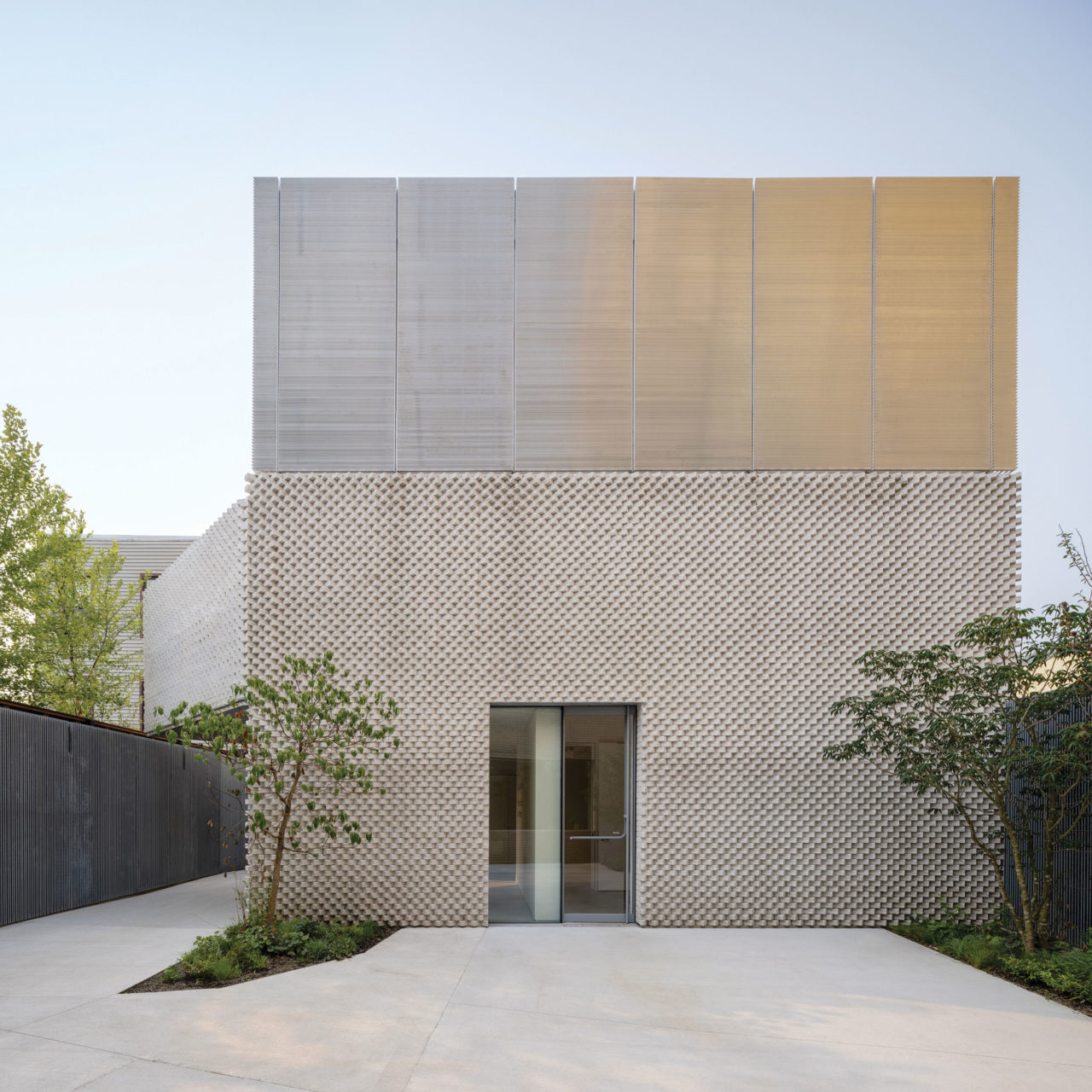
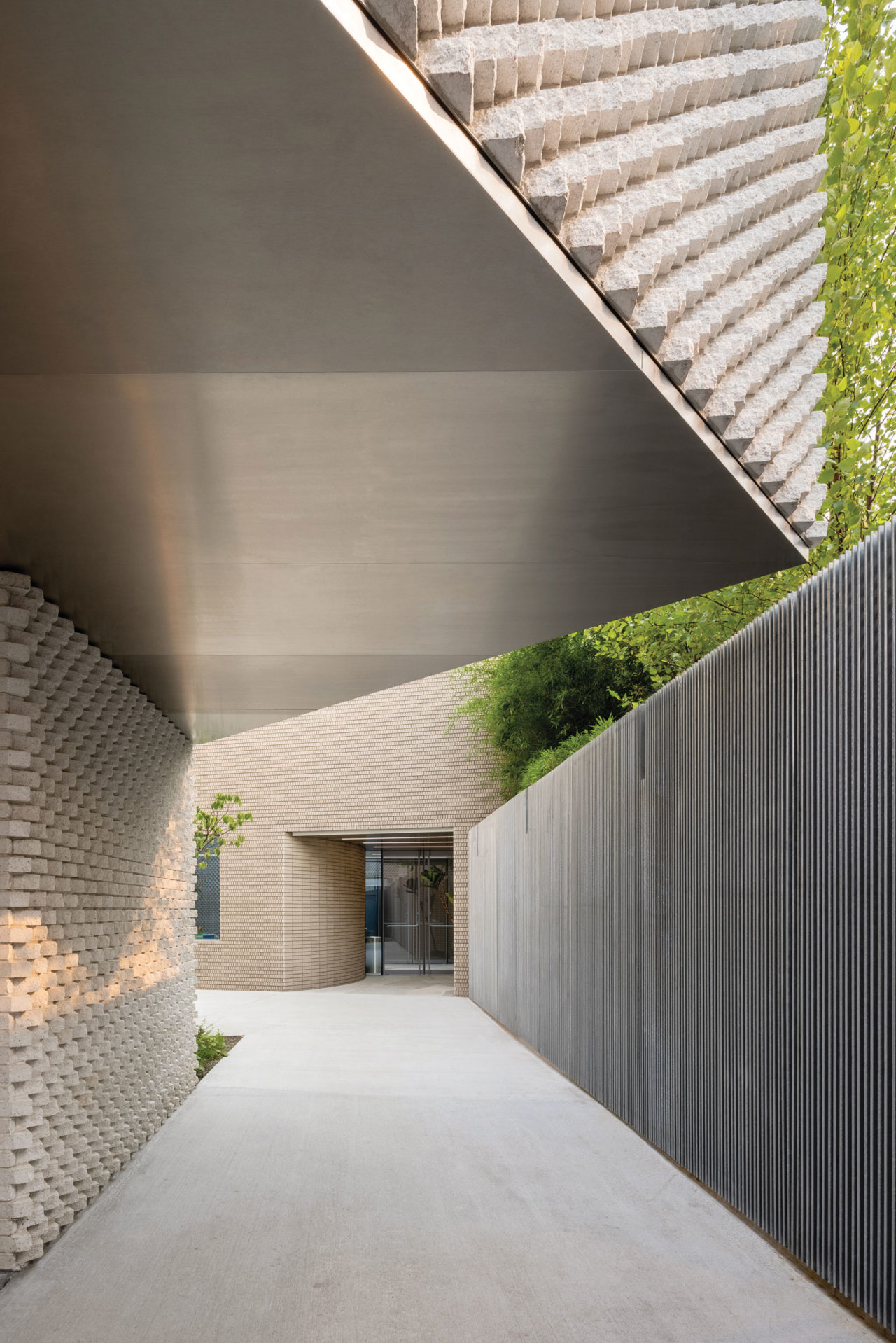
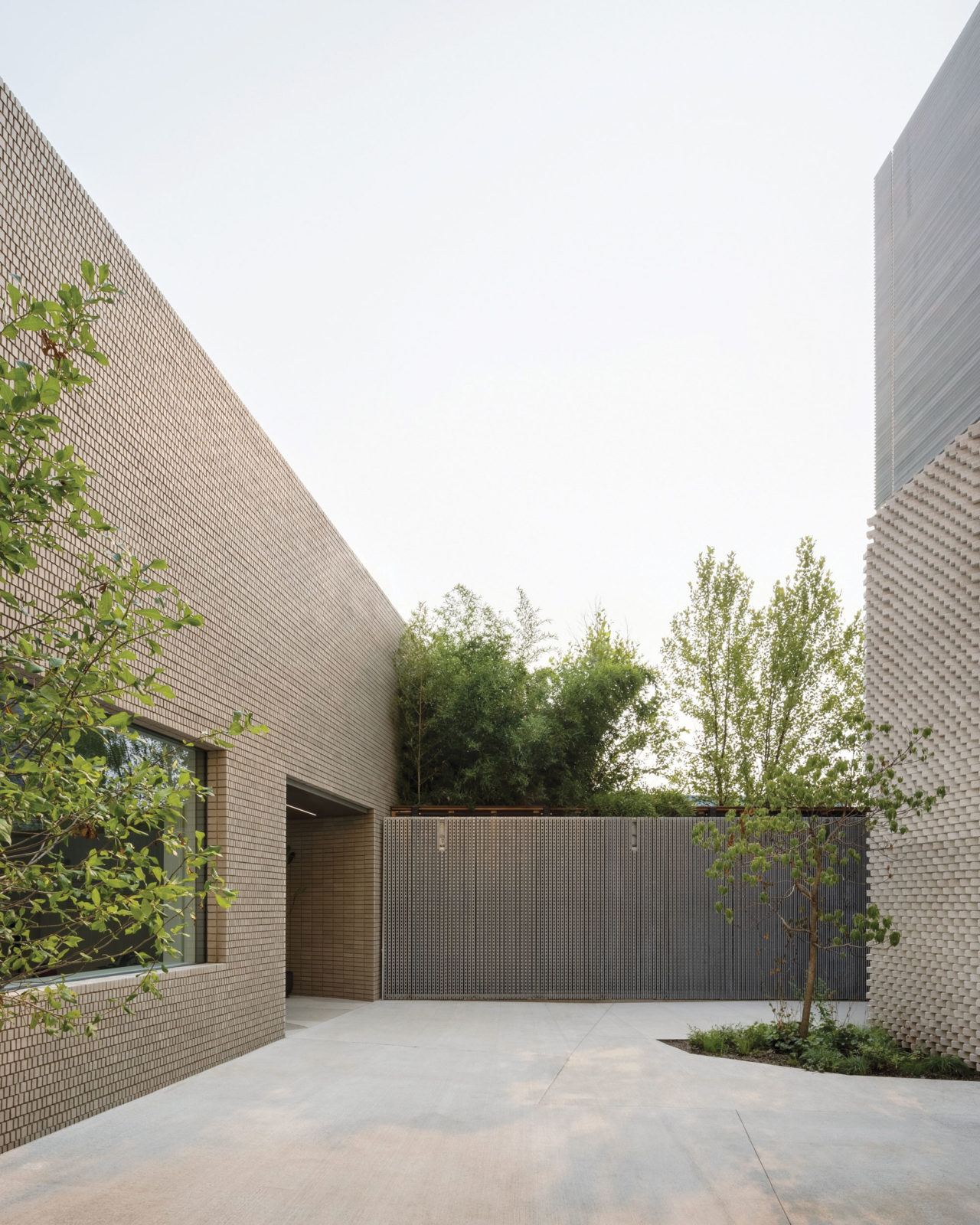
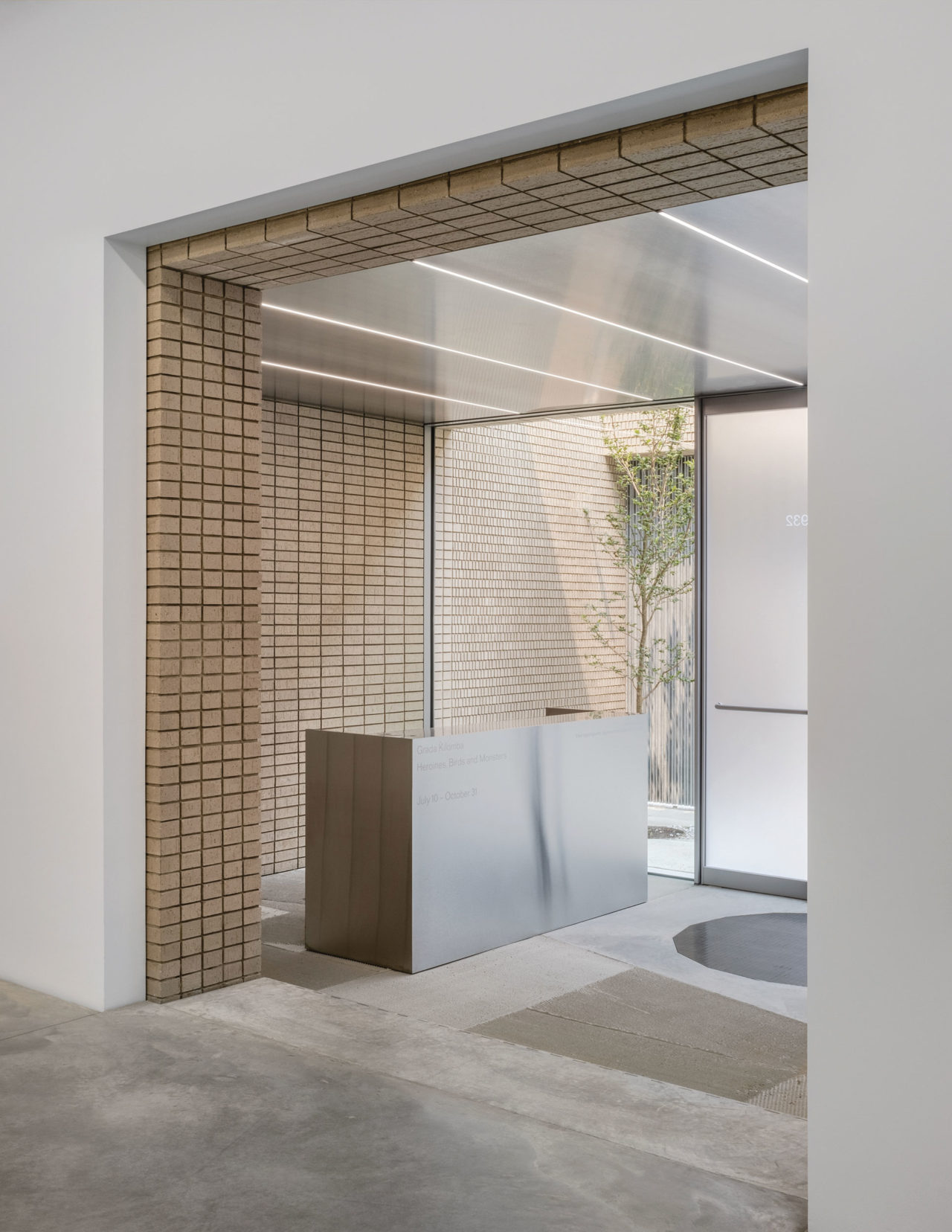
Smack in the middle of a gritty, industrial stretch Brooklyn’s Bushwick neighborhood, Amant appears like a mirage. The new contemporary art campus opened this summer with relatively little fanfare, yet it’s already become a local architectural shrine. Founded by art collector Lonti Ebers, Amant is an art incubator that offers residencies in New York City and Siena, Italy. Its New York outpost, straddling Grand and Maujer streets, is a 21,000-square-foot, three-building complex that houses galleries, art studios, a bookstore-café, and a gem of a courtyard. Amant, whose name comes from the Latin for “love” or “lover,” aspires to be a free public space for community building and reflection.
Subtlety is Amant’s animating force—so subtle that at times it’s easy to miss the campus amid the busy Grand Street traffic. Without any loud or literal gestures, it rewards attentive visitors with a series of surprises that builds like a smile in the mind. “You can spot the architects because they’re usually staring at the walls,” says the bookshop attendant, nodding toward the architect-type snapping photos of the gallery façade’s dog-tooth brickwork. Meanwhile, a couple is fondling the silver metal fence, seemingly mesmerized, and another visitor is peering through the art residency building’s whimsical potato-shaped window. One pilgrim is down on his knees, touching the poured concrete floor.

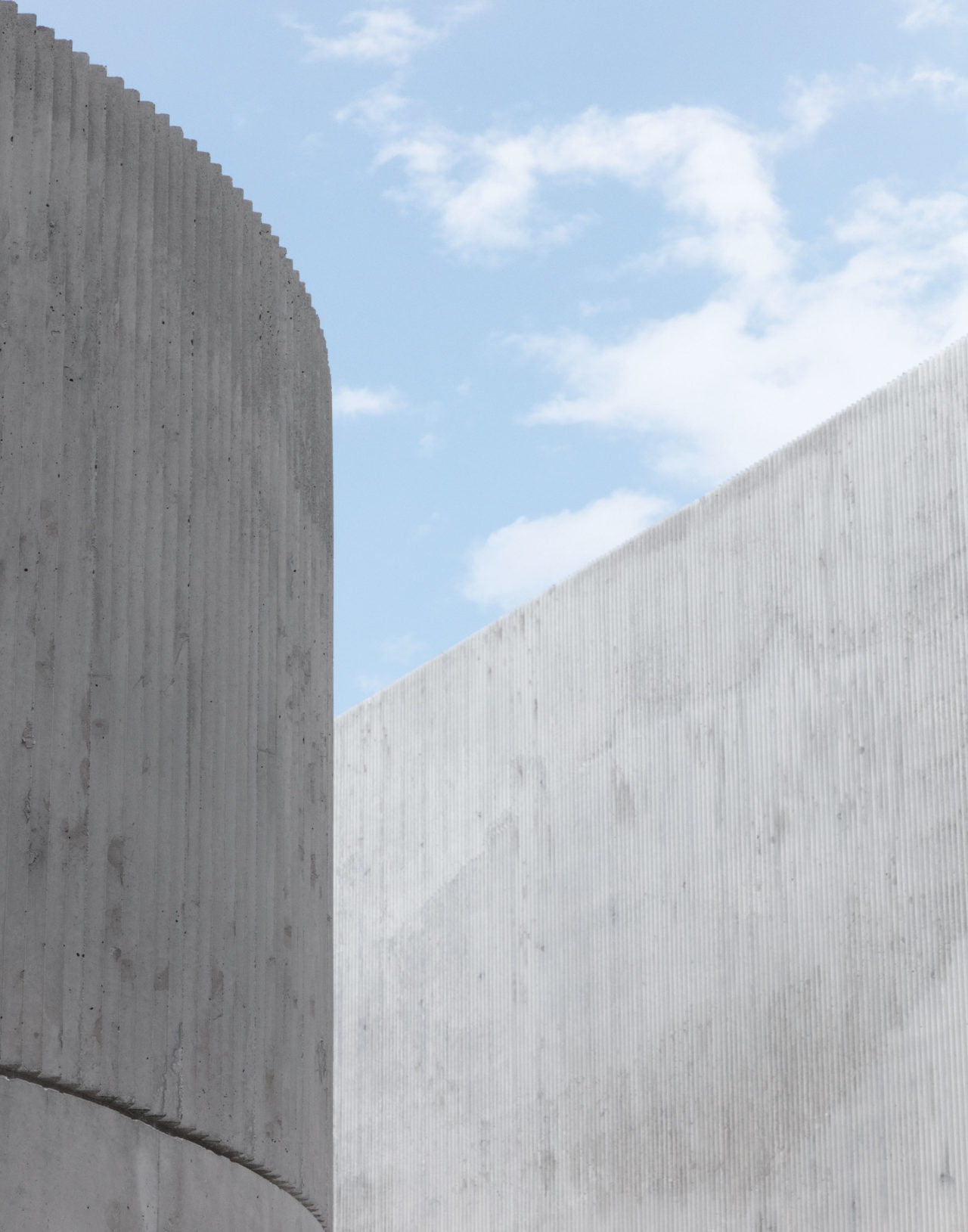
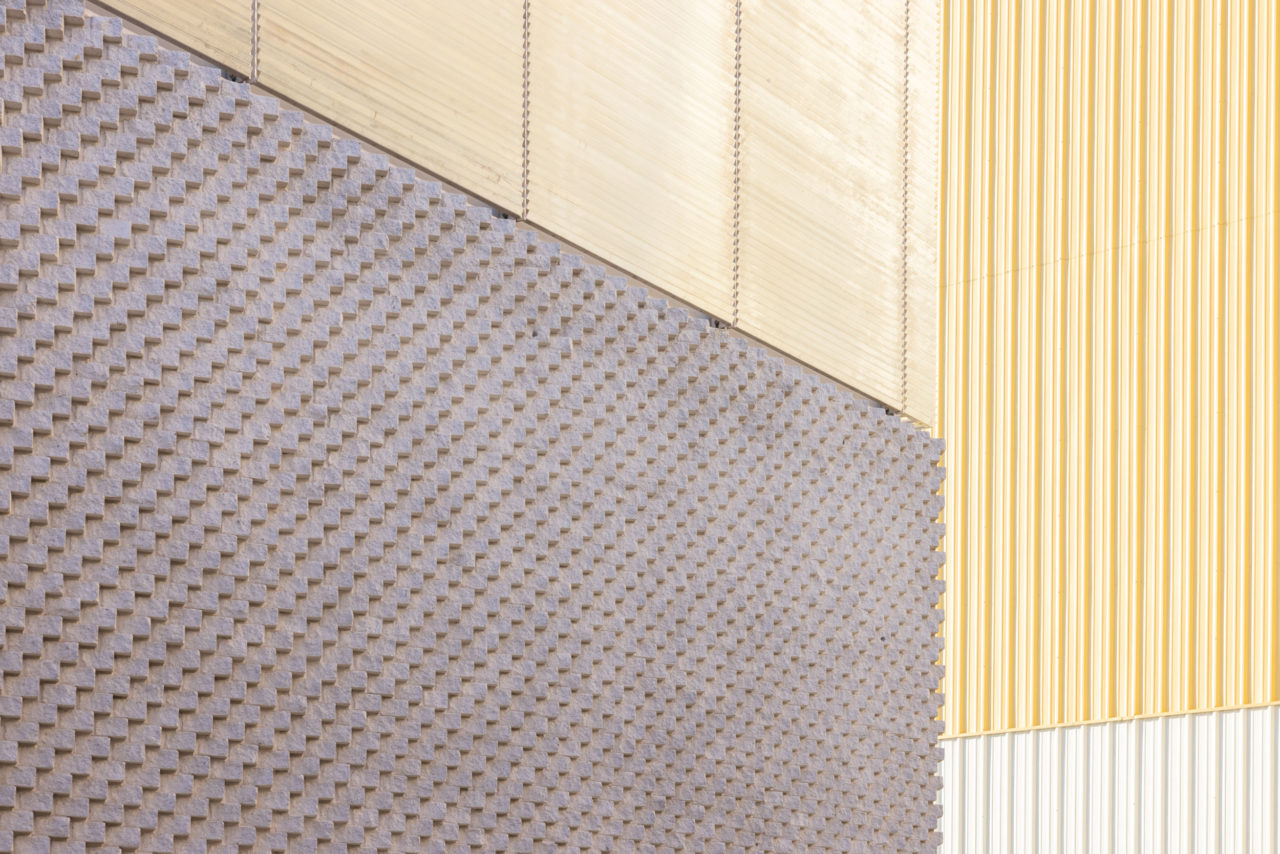
Indeed, the genius of Amant’s architecture lies in the novel applications of building materials common to this part of the city, such as brick, metal, and cement. It’s a signature of SO–IL, the Brooklyn-based firm that designed the building. “We think about the tectonics or materials that would allow the design concept to be realized from the very early phases of a project,” explains architect Kevin Lamyuktseung, who, along with colleague Ted Baab, oversaw Amant’s five-year development. “Most of the time it comes down to the details.”
For Amant, SO–IL labored over giving the box structures a tactile quality. “The texture was just as important as the volume,” notes Lamyuktseung. “We used standard materials in ways that make you want to touch it. The closer you get, the more depth and texture you perceive.” He is tickled to learn that people are actually touching the walls.
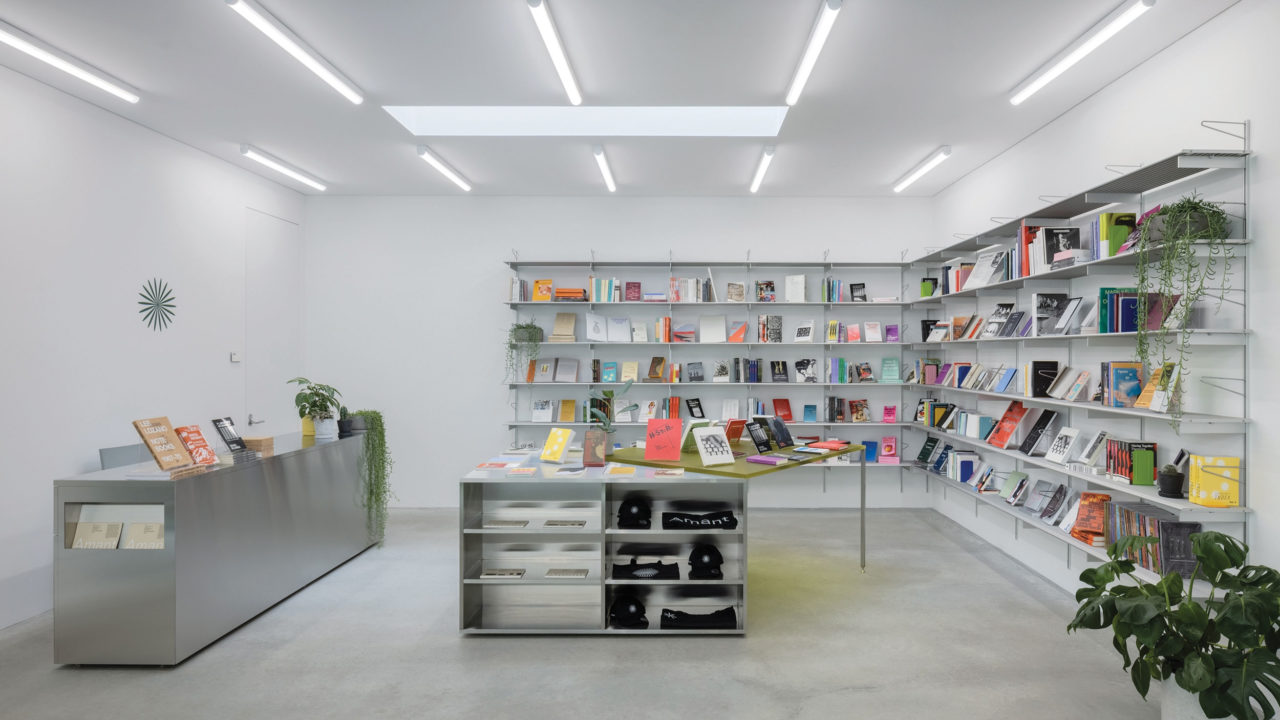
Making those crowd-pleasing concrete floors was essentially a collaborative performance art piece. Using a custom-milled rake, Lamyuktseung worked with the cement pourer to create the overlapping brush patterns, improvising in situ based on the viscosity of the material and the rhythm of the pouring and pulling action. They had to work fast—in 15-minute bursts—before the cement set. “It was challenging, but I think, in the end, the contractors enjoyed the process and the outcome, too,” he says.
Another crowd favorite is Amant’s courtyard. Muller Van Severen’s candy-hued Alu seating offers a burst of vibrant color in the heart of the campus’s cream-colored buildings; these are set against a canary-yellow wall that happens to be the side of the neighboring storage facility. “A lot of people ask if we designed that, too,” Lamyuktseung says. “It was more of a happy coincidence.” Amant is open from Thursday to Sunday and free to the public.














